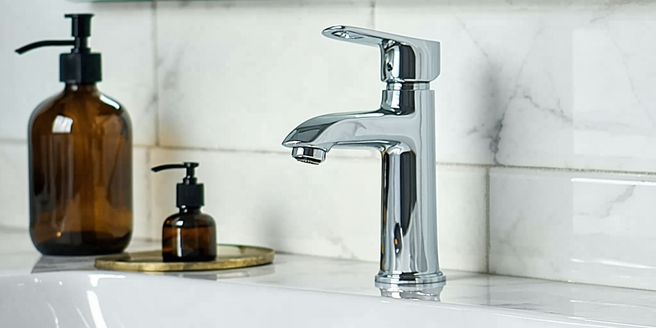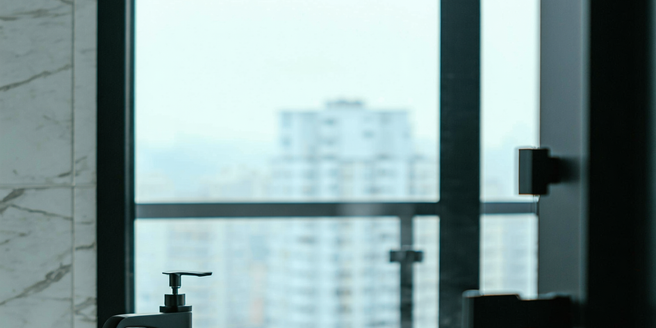Accessing Free Plumbing Diagnostics

Understanding the Basics of Plumbing Diagnostics
| Component | Description | Common Issues |
| Pipes | Transport water throughout the home. | Leaks, corrosion, bursting. |
| Valves | Control water flow within the system. | Leaks, wear and tear. |
| Faucets | Devices for controlling water at usage points. | Dripping, low pressure. |
| Water Heaters | Heat water for domestic use. | Insufficient heating, leaks. |
| Drains | Remove wastewater from areas. | Blockages, slow draining. |
| Fixtures | Permanent devices for water use. | Leaks, clogs. |
Why Opt for Free Plumbing Services?
Opting for free plumbing services can be an incredibly resourceful decision, especially for homeowners looking to manage costs while addressing their plumbing concerns. These services typically offer initial consultations at no charge, often revealing basic issues that can be resolved with minimal expense or effort. Moreover, they provide an opportunity to gain professional insights without financial commitment, ensuring you’re informed about the state of your plumbing before taking further action. Free services often bridge the gap between DIY solutions and professional repairs, allowing homeowners to make educated decisions about necessary repairs without upfront costs. By utilizing these free diagnostic options, individuals can budget more effectively and prioritize repairs based on urgency and financial ability. Increasingly, online platforms and local community programs are making these services accessible, encouraging responsible home maintenance without the financial burden that typically accompanies expert assessments.
Identifying Common Plumbing Issues at Home
Recognizing common plumbing problems early can save homeowners from expensive repairs later. Dripping faucets, although seemingly minor, can waste a significant amount of water and drive up utility bills. Low water pressure might indicate pipe obstructions or leaks, while running toilets often lead to water wastage and inflated bills. Strange noises emanating from pipes, such as whistling or banging, can be a sign of high water pressure or inadequate pipe support. Furthermore, sudden temperature fluctuations in water temperature while showering could signal issues with the water heater. These problems, if ignored, can exacerbate over time, leading to more severe and costly repairs. Homeowners should remain vigilant for these common issues, taking swift action when they arise to maintain their plumbing system’s health and efficiency. Conducting regular checks and seeking professional advice when necessary are crucial steps in managing plumbing effectively.
Top Tools for Conducting Plumbing Diagnostics
Having the right tools on hand is essential for anyone attempting plumbing diagnostics at home. A basic toolbox should include a plunger, essential for resolving minor clogs in toilets and sinks. An adjustable wrench is invaluable for tightening or loosening pipe fittings, while a pipe wrench offers the additional grip needed for larger pipes. A plumber’s snake, or auger, allows homeowners to tackle deeper blockages that are beyond the reach of a standard plunger. For more precise diagnostics, a water pressure gauge can measure the system’s pressure to ensure it falls within safe and efficient limits. Additionally, a flashlight is crucial for inspecting dark or hard-to-reach areas, ensuring you don’t overlook any issues. With these tools, homeowners can perform initial assessments and minor repairs, maintaining their plumbing system’s integrity and function until professional help is available.
Finding Reliable Sources for Free Plumbing Help
In today’s digital age, finding reliable sources for free plumbing help has become easier than ever. One prominent avenue is online forums and community groups, where experienced individuals offer advice and troubleshooting tips based on the information shared by users. Home improvement websites frequently provide step-by-step guides and best practice videos for tackling basic plumbing tasks. Additionally, some plumbing companies offer free initial consultations or virtual assessments to diagnose simple issues. It’s also recommended to check local community centers or consumer protection agencies, as they might offer free workshops or resources aimed at educating homeowners about basic plumbing maintenance. While these resources provide valuable support, it is important to verify the credibility of the information and remain cautious when applying advice to ensure methods align with local regulations and safety standards. Cross-referencing tips from multiple reputable sources ensures a balanced approach to plumbing tasks.
How Virtual Consultations Can Save Time and Money
Virtual consultations have revolutionized the way homeowners approach plumbing diagnostics. By connecting with a professional plumber via video call, individuals can receive expert guidance without the need for in-person appointments, saving both time and travel costs. These consultations often allow homeowners to address issues in real-time, demonstrating specific problems directly to the plumber who can then offer immediate solutions or advice on how best to proceed. Moreover, virtual consultations reduce the necessity for preliminary visits, cutting down on service fees and ensuring you only commit to professional services when absolutely essential. For minor issues, virtual help might even suffice to rectify the problem entirely. With the rise of technology, many plumbing services now incorporate this option into their offerings, providing homeowners with flexible and immediate access to professional expertise from the comfort of their own homes.
Platforms Offering Free Diagnostic Services
The rise of online platforms has fostered new avenues for obtaining free diagnostic services, particularly in the plumbing industry. Several websites and mobile apps provide users with tools to diagnose common plumbing issues through step-by-step guides, often supported by diagrams and videos for clarity. Some platforms even offer AI-driven diagnostics, where users input symptoms, and the system suggests potential fixes or the need for professional intervention. Certain plumbing companies have introduced free virtual assessment services, allowing customers to connect with professionals through video calls for instant diagnostic evaluations. This approach not only helps in identifying issues without incurring costs but also aids in discussing potential solutions before any work begins. Additionally, community forums and online help centers serve as excellent resources where experienced professionals and fellow homeowners share experiences and solutions. These platforms make expert advice more accessible, empowering homeowners to address plumbing concerns confidently and efficiently.
Preparing for Your Free Plumbing Consultation
Being well-prepared for a free plumbing consultation ensures you make the most of the opportunity, gaining valuable insights and actionable advice. Start by documenting any recurring issues, noting when they occur and any patterns that arise, as this information is crucial for diagnosing the problem accurately. Gathering a list of questions or concerns beforehand can also help ensure all points are addressed during the consultation. Take photos or videos of problematic areas to provide visual context during the discussion. Ensure that you have access to essential plumbing components for inspection, such as beneath sinks or around water heaters, so any issue areas can be easily viewed. By organizing relevant information and questions, you can have a more efficient and effective consultation, allowing the expert to provide a more precise diagnosis and recommended actions. Being prepared not only saves time but ensures you leave the consultation with a clear understanding of your plumbing system’s needs.
Interpreting the Results of Your Plumbing Diagnostic
Understanding the results of your plumbing diagnostic is crucial in determining the next steps for resolving any issues in your system. Post-diagnostic, the professional will typically provide a summary of their findings, highlighting areas that need attention and potential solutions. It is important to ask clarifying questions to ensure you fully comprehend the report, especially regarding the severity and urgency of any identified problems. Some diagnostics might include technical jargon, so don’t hesitate to seek explanations in simpler terms. Understanding the scope of necessary repairs will help in obtaining more accurate cost estimates and timelines for completion. If multiple repair options are available, understanding the pros and cons of each can guide you in making an informed decision. Following the diagnostic, consider planning follow-up actions based on the recommendations provided, ensuring your plumbing system returns to optimal functionality with minimal delay.
Next Steps After a Free Plumbing Diagnostic Evaluation
Once your free plumbing diagnostic evaluation is complete, it’s time to strategize your next steps. First, prioritize addressing any urgent issues identified during the evaluation, as delaying repairs could escalate problems and increase costs. For non-urgent matters, consider researching different solutions and comparing local service providers, keeping cost, timescales, and customer feedback in mind. If the evaluation results indicate potential DIY fixes, gather the necessary tools and materials, and consult reliable resources to guide you through the process. Prior to commencing any work, ensure that you understand local plumbing codes and safety regulations. Maintain a record of the diagnostic results and any subsequent actions taken for reference during future maintenance or if further professional intervention becomes necessary. Proactively addressing identified issues not only enhances the efficiency and longevity of your home’s plumbing system but translates into long-term savings and peace of mind.
